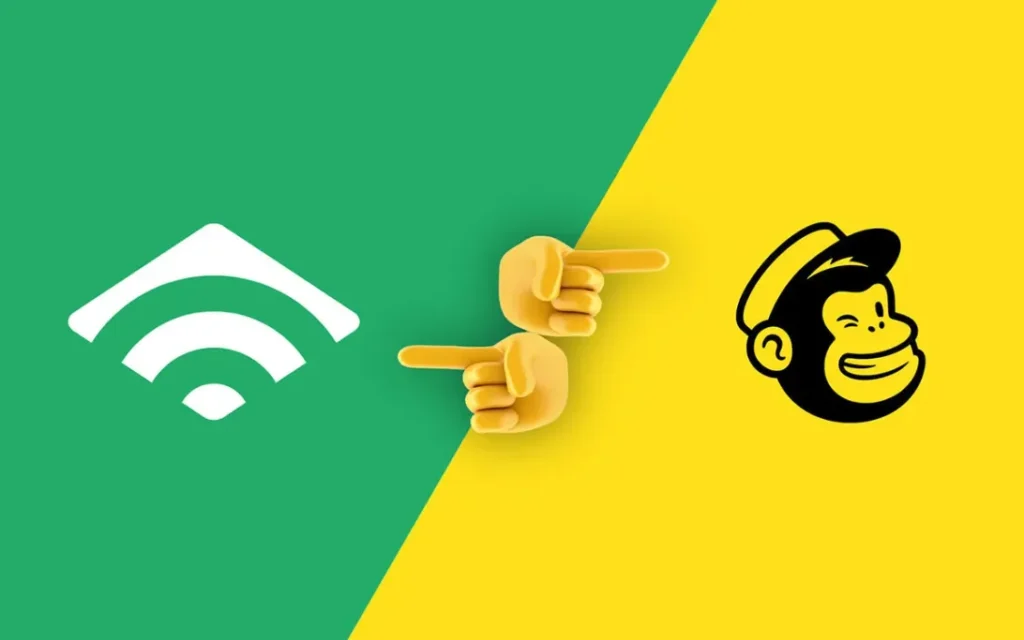When was the last time you bought something online?
Did you find it through a Google search that led to the product’s website? Maybe you clicked on a social media link? Or was it an email in your inbox that sealed the deal?
If we look at trends, email often takes the lead in driving purchases. In fact, the global email marketing revenue was valued at $8.3 billion in 2023, and it’s projected to reach $18.9 billion by 2028. Clearly, email marketing is here to stay.
But here’s the thing: if you want to get your slice of the email marketing revenue, simply doing email marketing isn’t enough.
To see real results, you need to do it right.
That’s why we’re breaking down the 7 top email marketing strategies to help you boost e-commerce sales, and how to use key tools in Mailchimp and Klaviyo to make it easier.
1. Build your email list
You can’t do email marketing without an email list, right?
But instead of just setting up a few forms and calling it a day, take a closer look at how you’re collecting subscribers and see if you’re missing any opportunities.
Add your Mailchimp and Klaviyo signup forms where they’re easy to spot—like your website’s homepage, footer, or sidebar. Popups work great on high-traffic pages, but use them sparingly so you don’t annoy visitors. And if you’re driving traffic from social media, send visitors to a landing page focused on getting them to sign up.
While you’re at it, don’t forget to pair these signup forms with incentives like a discount, freebie, or free shipping to make signing up a no-brainer.
2. Set up a welcome series
First impressions are everything. They set the tone for how customers interact with your brand and what they can expect moving forward.
If you’ve already captured their attention with an incentive for joining your list don’t let the momentum stop there. Use a welcome series to create a lasting impression, keep your brand top of mind, and even get some sales.
Your welcome series could include:
- A warm thank you and welcome message.
- A special discount for their first purchase.
- The story behind your brand—how it started and what inspired it.
- A spotlight on your brand’s values, like sustainability or giving back.
- Useful tips or guides on how to make the most of your products.
Mailchimp and Klaviyo have welcome email automation templates. Customize it to your liking and activate it. That way, every new subscriber will automatically receive these emails.
3. Segment your subscribers
Segmentation allows for targeted and personalized messaging, which boosts engagement and conversion rates. In fact, it’s been shown that segmented email campaigns account for 55% of email marketing revenue.
Mailchimp, Klaviyo, and a few Mailchimp alternatives have helpful segmentation tools for ecommerce brands. You can use them to segment your audience based on their demographics (e.g., location, age, birthday, etc.) and behavior (for example, engagement levels and purchase history).
Let’s say you run a clothing store. You can use segmentation to send birthday discounts to customers, promote winter coats to people in colder areas, or offer discount codes to your most loyal customers.
4. Recover abandoned carts
Abandoned cart emails let you remind customers about items they added to their cart but didn’t buy.
If you’ve connected your ecommerce shop to Mailchimp or Klaviyo, you can use their abandoned cart automation templates to set up these reminders. You just need to tweak them a bit:
- Add about three emails to the automation
- Customize their subject lines and content
- Include discount codes and recommended products in the emails
Once you’re done, turn on the automation and let it do its thing.
5. Re-engage dormant subscribers
Every email list has inactive subscribers—those who haven’t opened or clicked an email in months.
These dormant subscribers can be a sales opportunity if re-engaged or a problem if they continue to drag down your email deliverability, which is basically the percentage of emails that land in your subscribers’ inboxes.
Start by deciding when a subscriber is considered inactive, typically after 6-12 months of no engagement. Once you’ve segmented them, send a re-engagement email automation to bring them back.
Mailchimp and Klaviyo have re-engagement automation templates that make this easy. You can customize them to have three emails that highlight:
- A discount or special offer to rekindle their interest.
- New products or updates they may have missed.
- A poll or survey to gather their feedback and understand how to improve your content and offerings.
Ensure this automation ends by unsubscribing email subscribers who don’t re-engage.
6. Split test your email campaigns
What you think will drive conversions—whether it’s the subject line, email format, CTA, or send time—may not be what actually works.
Customer behavior can be unpredictable, which is why split testing (aka A/B testing) is a powerful tool for finding what resonates best with your audience and drives conversions.
For instance, a study by CXL found that red buttons outperformed green ones. That may or may not hold true for your case…the key is to test and uncover what works.
To get the most out of your split tests, focus on one variable at a time. For example, test two different subject lines in the same email or experiment with sending the same email at different times.
Once you’ve analyzed the results, use the insights to refine and improve your future campaigns.
7. Measure success with key metrics
Tracking key metrics in your email platform is essential for understanding how your emails are performing.
As an ecommerce brand, here are three key metrics to focus on:
- Open rate: The percentage of recipients who open your email. This shows how effective your subject lines are at grabbing attention.
- Click through rate (CTR): The percentage of recipients who click a link in your email. This helps measure how engaging your email content and CTAs are.
- Conversion rate: The percentage of recipients who complete a desired action, like making a purchase. If these are very low, it may be a sign to segment your audience, review your offer, or simplify your checkout process.
Conclusion
There you have it—simple yet effective strategies you can start implementing today to boost your ecommerce sales. If you’re not getting your desired results, see it as an opportunity to experiment, refine, and learn what works best with your audience.

